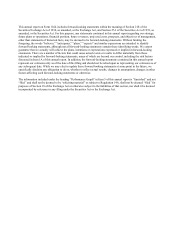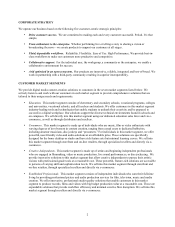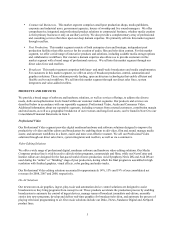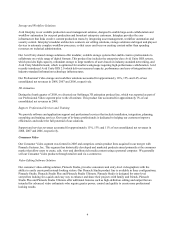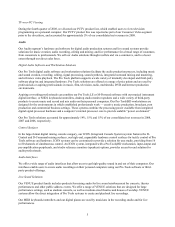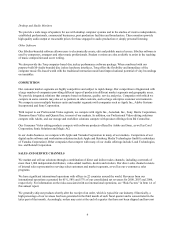Avid 2008 Annual Report Download - page 14
Download and view the complete annual report
Please find page 14 of the 2008 Avid annual report below. You can navigate through the pages in the report by either clicking on the pages listed below, or by using the keyword search tool below to find specific information within the annual report.9
ITEM 1A. RISK FACTORS
Investing in our common stock involves a high degree of risk. You should carefully consider the risks and uncertainties
described below in addition to the other information included or incorporated by reference in this annual report before
making an investment decision regarding our common stock. If any of the following risks were to actually occur, our
business, financial condition or operating results would likely suffer, possibly materially, the trading price of our
common stock could decline, and you could lose part or all of your investment.
Our recent efforts to transform our business may not yield the intended results of improved financial
performance and increased returns for our stockholders.
In 2008, we undertook a significant transformation of our business that included, among other things, establishing a new
management team, developing a new corporate strategy, reorganizing our internal structure, improving operational
efficiencies, divesting non-core product lines and reducing the size of our workforce. Although the majority of our
transformation activities are complete, the effects of the transformation are yet to be determined. While we undertook
these activities with the goals of improving our financial performance and creating greater returns for our stockholders,
they may be misdirected and insufficient or ill-timed, and we cannot be certain that they will yield the intended results.
The success of our transformation efforts will depend, in part, on the following:
• the extent to which our management team has properly understood the dynamics and demands of our market in
crafting the transformation;
• our management team’s ability to execute our new corporate strategy;
• customer acceptance of our new corporate strategy and other changes to our business;
• our employees’ ability to adapt to our new corporate strategy and organizational structure;
• our ability to maintain any efficiency gains for the long-term; and
• global macroeconomic conditions.
Our success depends in significant part on our ability to provide innovative solutions in response to dynamic and
rapidly evolving market demand.
To succeed in our market, we must deliver innovation. Innovation requires both that we accurately predict future market
trends and customer expectations and that we possess the flexibility and nimbleness to quickly adapt our product
roadmap and development efforts in response. Predicting market trends may be difficult to the extent our market is
dynamic and rapidly evolving. Additionally, given the complex, sophisticated nature of our solutions and our typically
lengthy product development cycles, we may not be able to rapidly change our product direction or strategic course. If
we are unable to accurately predict market trends or adapt to evolving market conditions, our ability to innovate and
capture customer demand will suffer and our financial performance and market reputation will be negatively affected.
Even to the extent we make accurate predictions and possess the requisite flexibility to adapt, we may be able to pursue
only a handful of possible innovations as a result of limited research and development resources. Our success, therefore,
further depends on our ability to identify and focus on only the most promising innovations. We additionally have the
challenge of protecting our product roadmap and new product initiatives from leaks to competitors that might reduce or
eliminate any innovative edge that we seek to gain.
Our revenues and operating results depend on several variables and may fluctuate from period to period.
Our revenues and operating results depend on several variables, which include, but are not limited to:
• timing and acceptance of new product introductions by us and our competitors;
• competitive pressure on product pricing;



